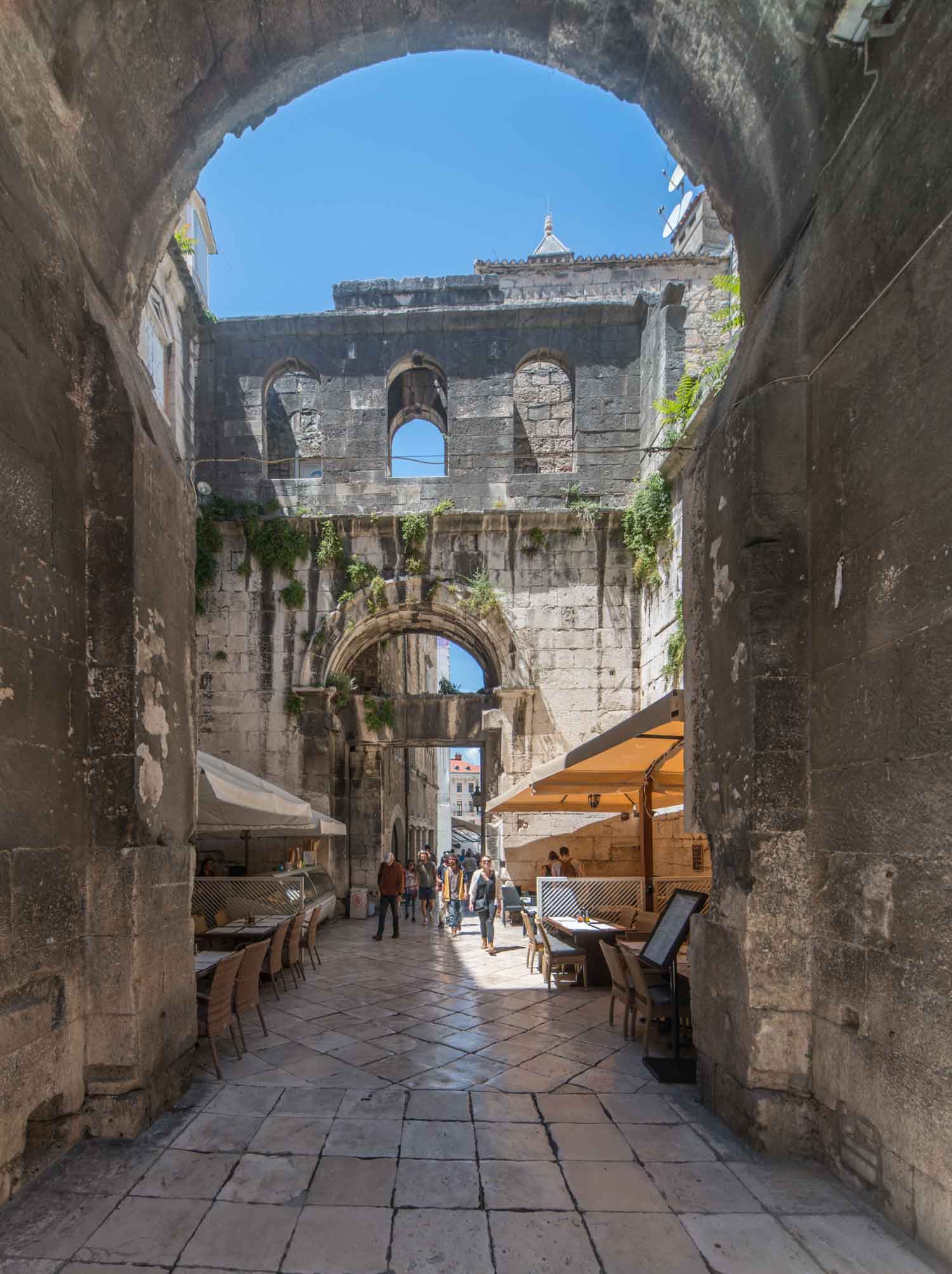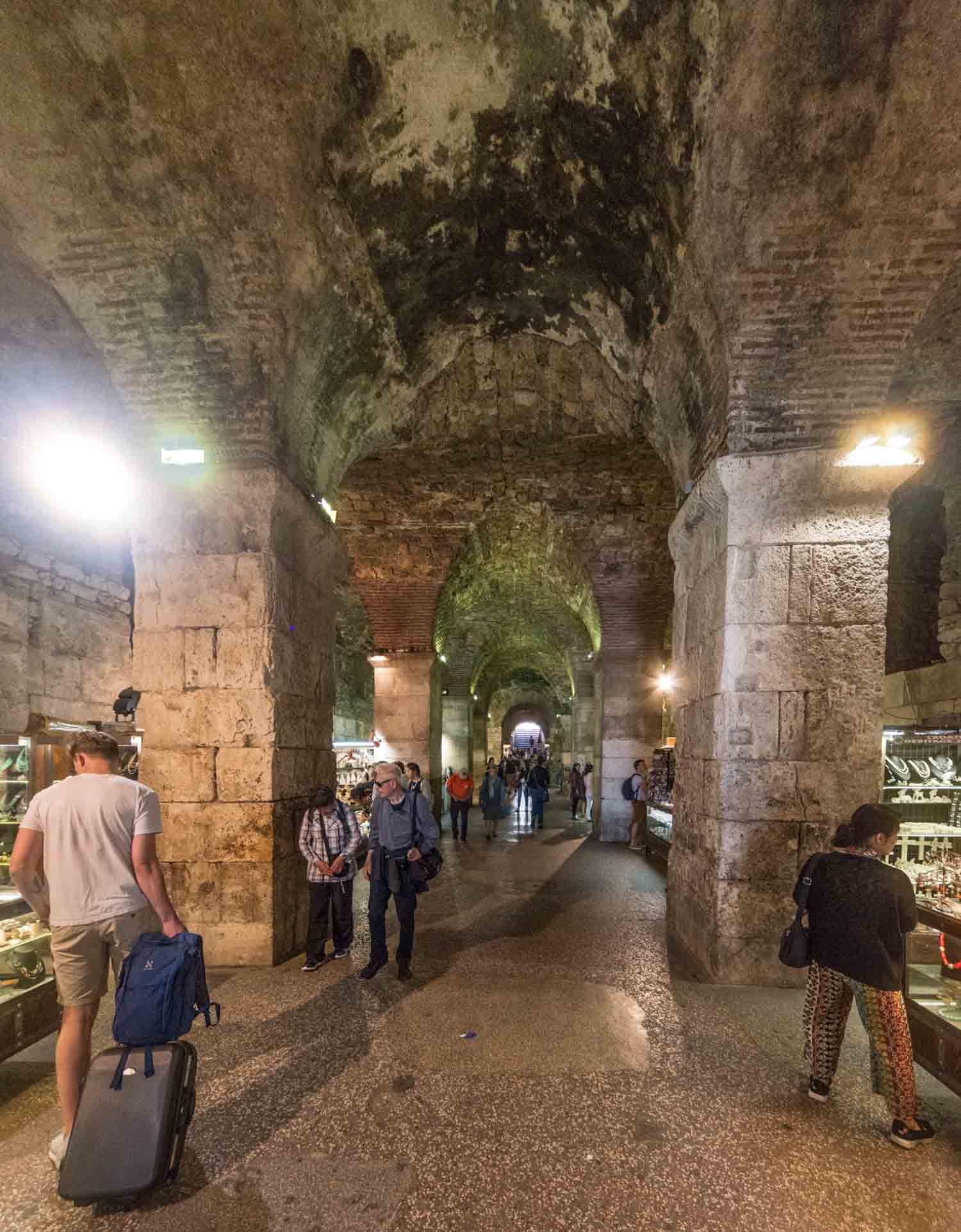Today Team Basil decided to educate itself with a visit to the UNESCO World Heritage city of Split, which is less than 20 miles or so south of Trogir.
I asked at reception if there were any alternative ways of getting to Split, other than taking Basil and I was told that a boat ran a few times a day from Trogir. In the end, partly for the convenience of having Basil with us, and partly because the walk into Trogir for the boat was not an attractive proposition, we set off in Basil.
Parking in such a popular and large city as Split was clearly going to be a major problem and I warned Sarah that we might arrive in Split and find that there is nowhere suitable to park. I had, however, made a list of potential parking places from the App Park4Night in order to minimise that possibility.
On arrival my first parking place was clearly full and so we headed for the second, but on our journey we passed, what I assume was, Split’s football ground. Next to the stadium was a huge empty car park, with a few vehicles situated. We pulled in and found that, as far as we could see, it was free of charge and there were several places big enough for Basil. I checked on Google Maps and found that it was only 25 minutes walk to the centre of Split. Ideal.
The walk was straightforward and as we neared the sea front the roads all became pedestrianised, which is always a bonus when walking the dogs.

The main attraction in Split and the reason for its World Heritage status is Diocletian’s Palace. Diocletian was a pagan Roman Emperor who immediately preceded the Emperor Constantine, the introducer of Christianity as a state religion to the Roman Empire. In 295 BC he ordered a fortified palace to be built next to the sea near the Roman city of Salona to be used in his retirement. The palace was about 190 metres by 160 metres and surrounded by defensive walls about 20 metres high.
When Salona was overrun by “barbarians” more than 300 years later, some of the population moved to the the fortified palace and started the new city of Split from within its walls.
The amazing thing is that the citizens of Split have continued to live in the Palace ever since. Transforming some of the Roman structures, such as Diocletian’s mausoleum into a Cathedral and the Temple of Jupiter into a Baptistery.
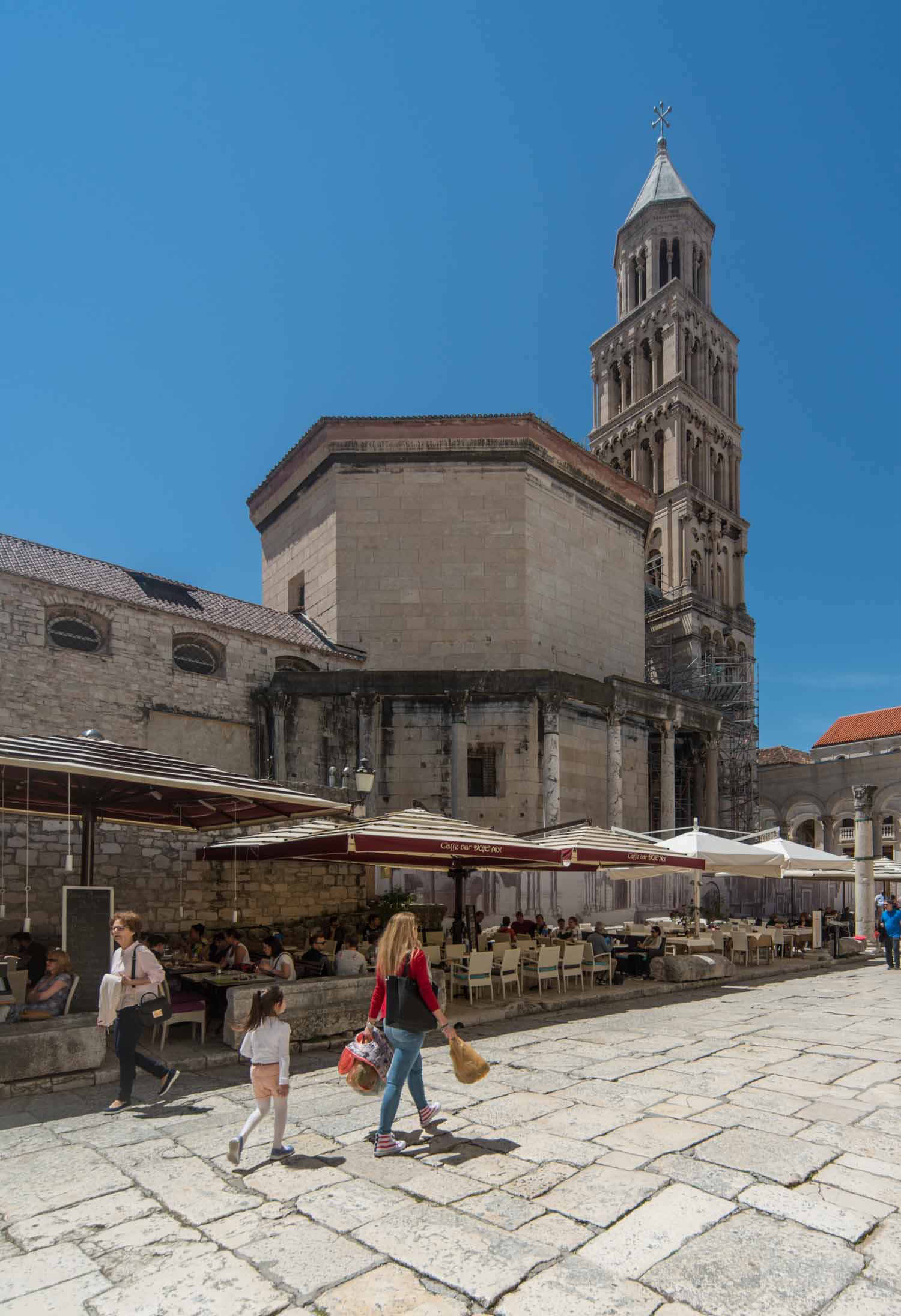
They have built their homes within the palace either within existing palace buildings or using stones from the palace. Until relatively recently the palace area had become known as one or the poorest areas of the city which grew up in the surroundings, but tourism has changed all that.
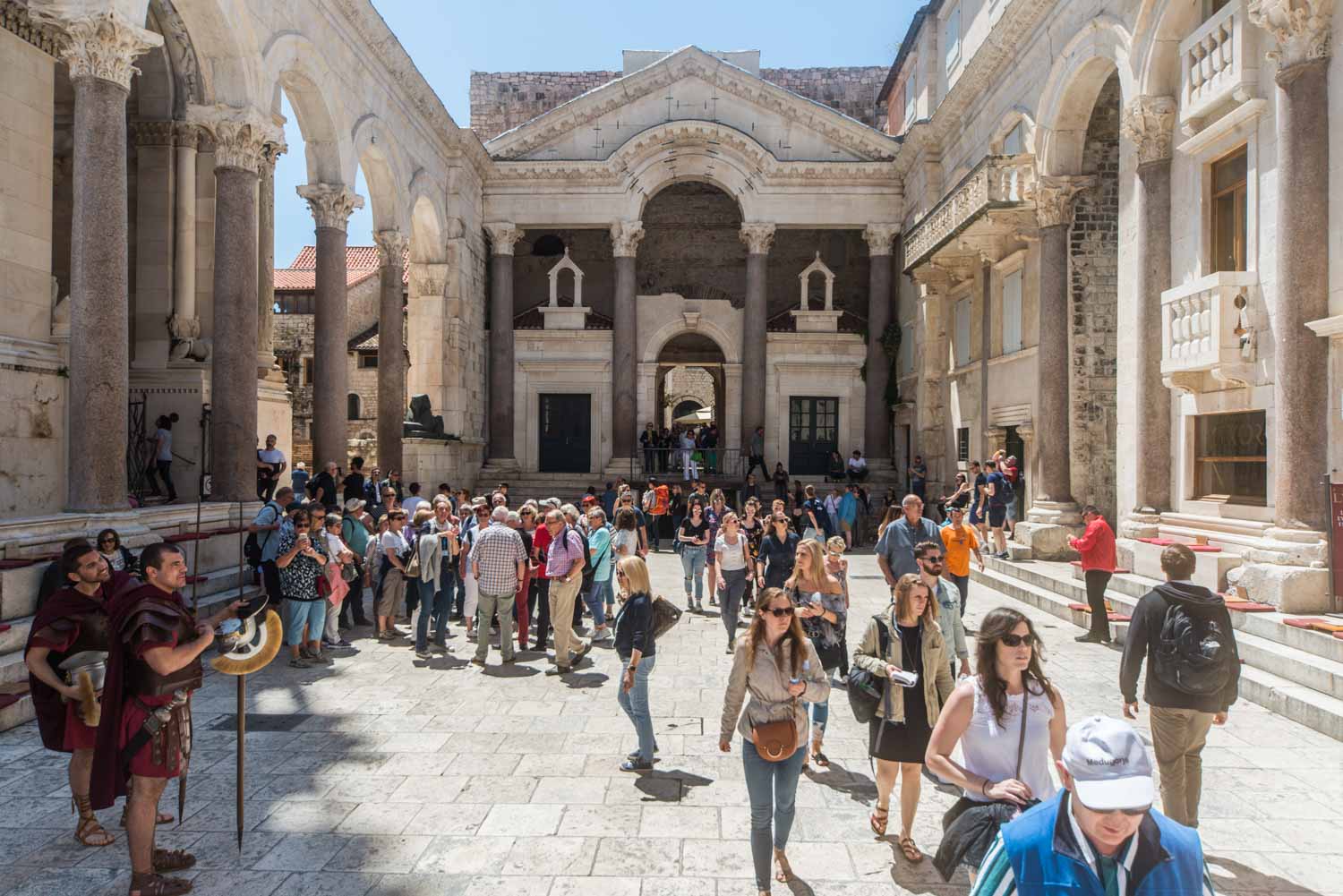
We started our visit by walking along the Riva, there area between the palace and Split harbour which has recently been transformed by a complete renovation. The four Roman gates into the palace still exist and we entered from the south side into an area which was still completely Roman in origin and which would have sat underneath the original palace. A set of steps then took us up to the centre of the old palace where there is a Venetian style cathedral, surrounded by Roman columns, built in and on Diocletian’s mausoleum. Split, of course, like Trogir, was under Venetian rule or influence for the best part of 700 years. Diocletian’s body disappeared from within the mausoleum about 170 years after his death, probably destroyed by Christians taking revenge on the Christian hating Pagan Emperor.

We then just wandered through the tangled alleyways of the palace, where in places the Roman construction is obvious and elsewhere where you may as well be wandering thorough an Italian Renaissance town.

There are tat shops, bars and restaurants in every nook and cranny, but mostly discrete and of reasonable quality and and an obligatory Game of Thrones emporium since apparently one of the Game of Thrones series was mostly filmed in the palace.
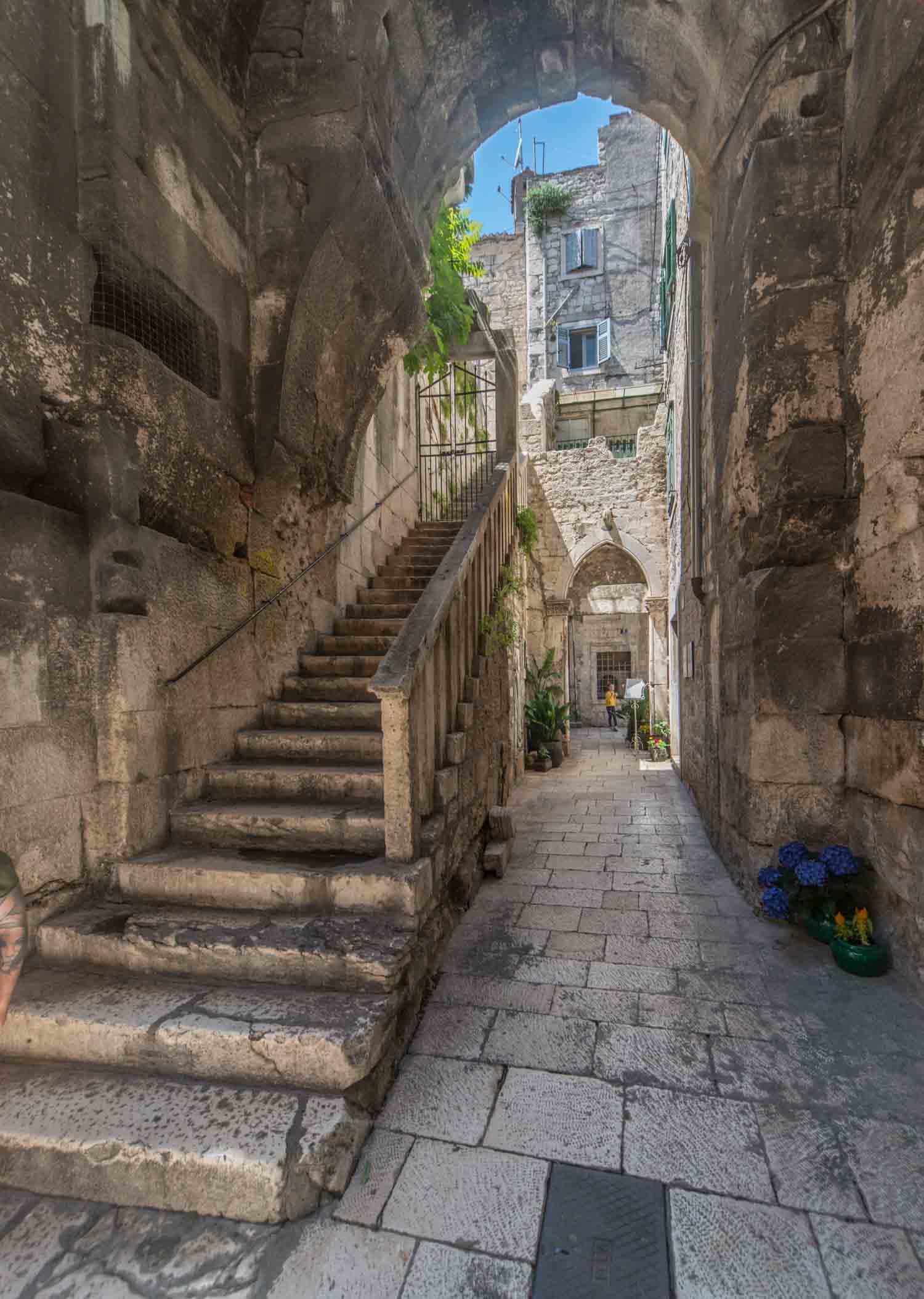
In all it is a fascinating place to visit and I suspect, if we had more time, other areas of Split may have been worth a few hours of our time. We, on the other hand, had a LIDL with our name written on it, which we needed to visit before returning to the campsite.
Tomorrow, providing the weather is good, we are going to have a day off following our two UNESCO sites in two days.

